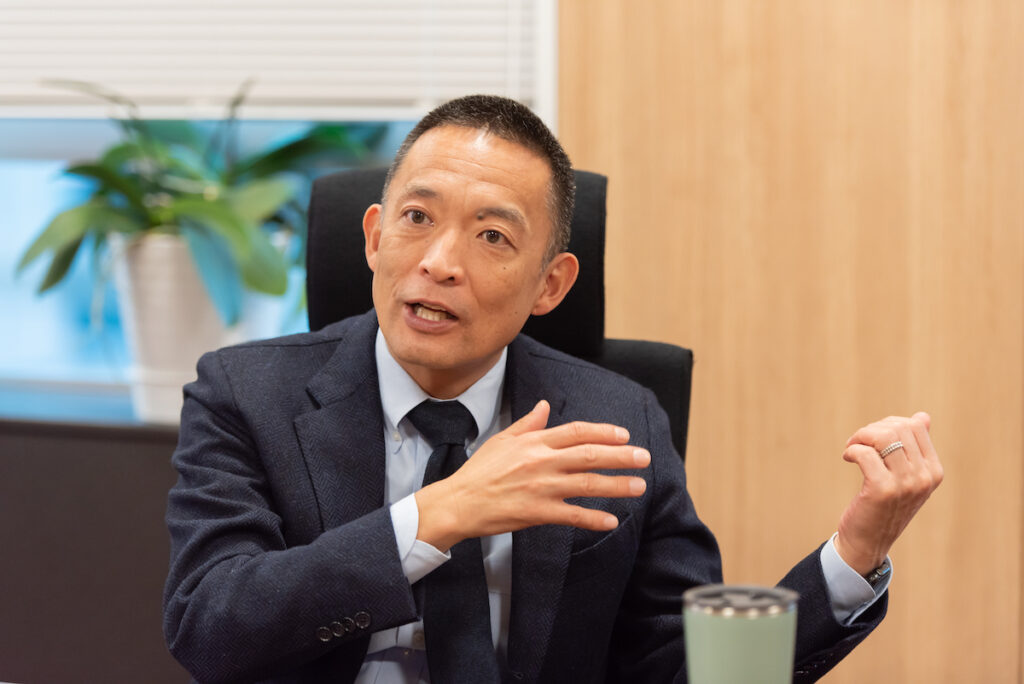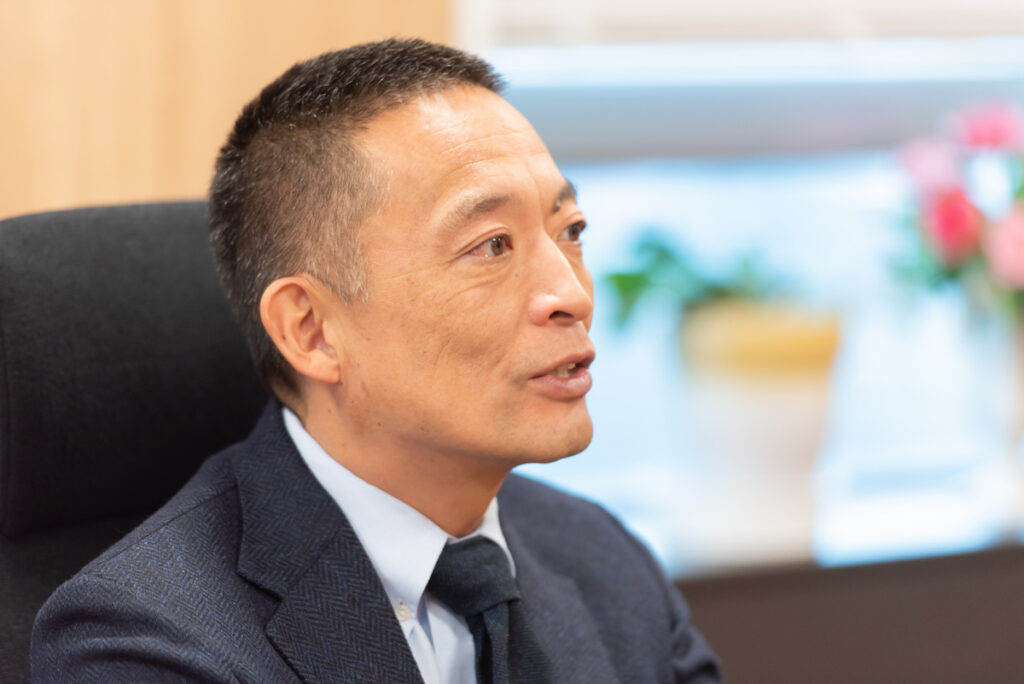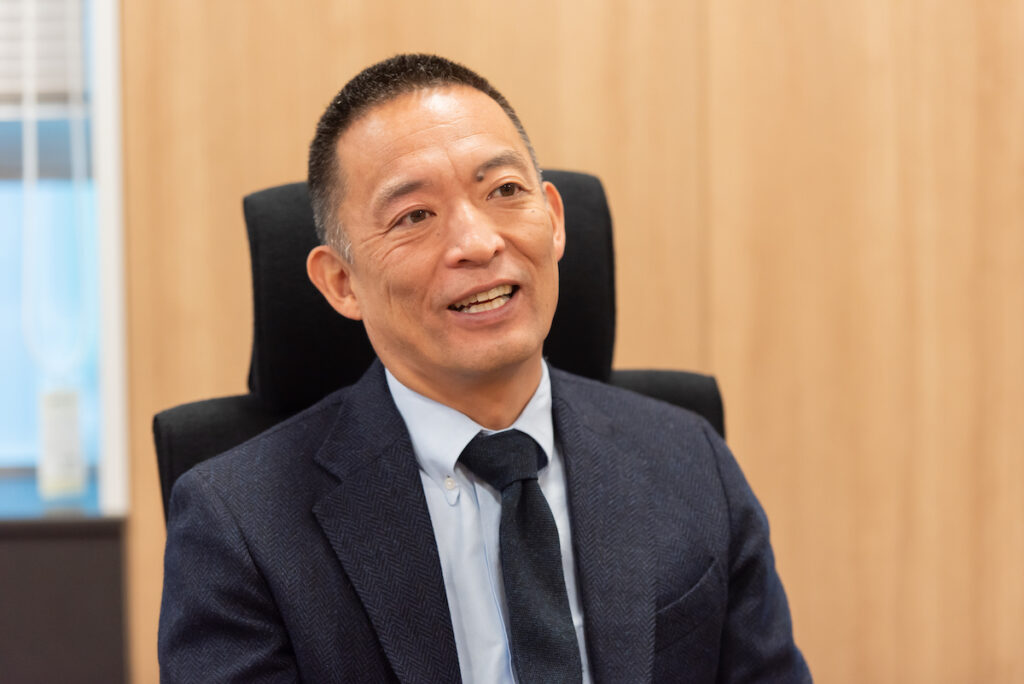
In 2023, various events related to Web3 were held in Shibuya. Shibuya Ward also has the largest number of startup companies among Tokyo’s 23 wards, along with Minato Ward, and Shibuya Startups, a company specializing in startup development, has also started operations. DIG SHIBUYA, an event that combines art and technology, will begin soon. While it is an important stage supporting Japan’s Web3 scene, we spoke to Mayor Hasebe of Shibuya, who says that he feels both a great opportunity and a sense of crisis.
Responsible region for Japanese startups
──Shibuya Ward has established a Global Hub City Promotion Office and is actively working on Web3 and NFT.
Hasebe:I was born and raised in Shibuya Ward for 50 years, but Shibuya has only been a ward for about 90 years. Before that, it was a rural area just like the NHK morning drama. Meiji Shrine was built in Harajuku during the Taisho period because the land was vacant. It’s a very new city. Ever since Meiji Shrine was built, people from all over Japan have been flocking to the shrine to make their mark in Tokyo. Therefore, I am open to taking on new challenges.
Kyoto and Kamakura have a long tradition and a sense of “city pride” based on their history. On the other hand, new people are coming to Shibuya, mingling, recognizing each other, and transmitting new values. I feel that this energetic aspect is connected to Shibuya’s city pride.
Initiatives for Web3 are actually an area in which it is difficult for the ward to take a step forward. The basics of the ward is resident services. In Shibuya Ward, the people who work in Shibuya Ward are not necessarily residents. In other words, it is difficult to spend the taxes received from residents on areas such as industrial and commercial promotion. I sometimes think that this is an area that should normally be carried out by the capital or country.
──What is the purpose of startup support?
Hasebe:Since 2003, when I became Mayor of Shibuya Ward, we have been actively promoting the attraction of startups. Compared to Fukuoka and Kobe, which were in the lead, we were about a year behind, but now we have suddenly jumped to the top level in terms of the number of startups, the number of companies we support, and the number of visas issued. .
The start-up movement is also directly connected to solving the issues faced by the ward. Start-up’s new technology may be able to solve the problems of declining birthrate, aging population, and child-rearing. I feel like now is my chance. Rather, I feel that the next few years are an opportunity, and I feel a sense of crisis: “If I can’t make it happen now, it’s over.” I would like the city and the country to be more proactive, but I understand that it is difficult to focus on a specific region. I would like to somehow take advantage of the tailwind.
In a sense, we can see the direction we are heading in, not only with Web3, but also with open data in government and politics, and with the aim of becoming a smart city. All you have to do is press the accelerator. However, of course it will be a matter of trial and error. The startups you support may go bankrupt. However, if we hesitate to do so, we will not be able to connect with the energy of the city. More specifically, I believe that we are a region that is responsible for Japanese startups, so I feel that we must step up to the plate.
Shibuya’s potential and the toughness of young people


–The government has also set Web3 as a growth strategy. Are you actively coordinating with the national and metropolitan governments?
Hasebe: National and metropolitan government initiatives tend to be flat and have some difficult aspects. When Shibuya City is working on various initiatives, the Tokyo Metropolitan Government may follow up on them. I would like to see more commitment to making the most of the “Tokyo” signboard, but I also understand the Tokyo metropolitan government’s position, so I am proceeding with the idea of “let’s run where we can.” However, I feel that Tokyo’s enthusiasm is also increasing.
Also, Japanese people are very humble. Even startups tend to think that the government won’t approve of this. This is a huge waste as a business opportunity. I want to create a momentum and environment that encourages people to take on challenges.
That said, today’s young generation is tough. It’s different from when we were young. In the past, people would compare things by saying, “That’s what they’re doing in that ward or town,” but now information is coming in from all over the world, and comparisons are being made with the rest of the world. Even if we worry about the weak yen, the young people who provide lodging services to foreigners at private lodging houses laugh and say things like, “We make our money in dollars, so it’s okay.” I feel it’s tough. As globalization continues to advance, we would like to take full advantage of the potential of Shibuya, where such human resources are being nurtured and active.
──You established “Shibuya Startups Co., Ltd.” with a private company with the aim of creating an international startup community in Shibuya. What kind of reaction did you receive?
Hasebe: Announced establishment in February 2023. Since then, I feel like things have finally started to take off. Additionally, the government’s involvement in startup development has made it easier for companies considering investing in or collaborating with startups to approach them. We were also able to enter into an agreement with AARP (American Association of Retired Persons), which is America’s largest senior citizen organization and has a strong financial base. There is also a movement to introduce age tech startups that AARP has invested in. The credibility of the government and the power of Shibuya are being demonstrated.
As a government, we look ahead to the “invisible revolution”


──New movements such as Bit Valley around 2000 and Crypto Valley a while ago started in Shibuya.
Hasebe: Isn’t it because it’s a source of information? About 20 years ago, I started Green Bird, an NPO to pick up trash, in Omotesando, and before I knew it, it was picked up by the media, and people started saying, “I want to do this in my town, too.”
In fashion, there were the “Takenoko-zoku” and “Rockabilly-zoku”, and during the band boom, the “Shibuya-kei” was also born. “Hokoten” spread various cultures all over the country, and young people gathered from all over Japan to spread the word about various cultures. However, while it used to be a town where people who wanted to rise up in the ranks gathered, I feel that now it has become a town where people who have made it to the top of their game come.
Also, although the fashion movement has been slowing down recently, Web3 has a good compatibility with fashion and culture, so I think we can create more chemical reactions. It is difficult for the government to decide on a specific direction, but we would like to watch over what is born, provide opportunities, and work together to create new things and solve problems.
Although Shibuya often gets the attention, Shibuya Ward has agreements with local governments across the country. For example, if someone says, “I want to fly a drone and do an experiment,” it won’t be possible in Shibuya, but I can introduce you to a local government where you can conduct an experiment. There are many things that can be done without using tax money, and we are working on such initiatives.
──2023 isWeb3 related event in ShibuyasomeheldI did.like whatResponseWas there?
Hasebe: “Bright Moments Tokyo”, an NFT art experience gallery, was held in May. According to what I hear, it sold about 700 million yen in two days. It is said that around 2,000 people came from overseas. I felt that an invisible revolution was taking place. The world is not changing as visibly as before. The revolution that has taken place over the past 10 years using IT is an invisible revolution. That is why only those who understand and recognize the revolution are reaping the benefits. We, the government, must also keep our eyes firmly on the situation.
As symbolized by Web3, the paradigm is about to change all at once. It is also a huge opportunity, and if we miss the opportunity, there is a sense of danger that we will be on the brink of not being able to catch up. Due to the weak yen, many people from overseas are visiting Japan, visiting Shibuya, and attracting attention, so I would like to take advantage of this opportunity.
──The art x tech event “DIG SHIBUYA” will be held from January 12th..
Hasebe:This is my first attempt, so I’m excited. While using the area around the ward office, we have also closed off Koen-dori and are holding art displays, parades, and other festival-like events. We will be hosting a mobile participatory art project featuring Los Angeles-based FriendsWithYou (FWY) as the main artist, screening video works using the street vision of late-night scramble intersections, and holding an NFT stamp rally. It’s a schedule.
We will also start building communities for startups, NFTs, and Web3 in earnest from here. In 2024, we want to continue to step on the gas pedal and be a city where people can do what they want. Not only Shibuya residents, but in the Web3 era, everyone who has feelings for this city is a member of the community. You can call them “Shibuya people.” I would love for you to be a part of that.


Ken Hasebe
Mayor of Shibuya Ward. Born in 1972 in Jingumae, Shibuya-ku, Tokyo. After retiring from Hakuhodo Co., Ltd., in January 2003, he established the NPO green bird and began promoting anti-littering activities mainly in Harajuku and Omotesando. In April of the same year, he was elected to the Shibuya Ward Assembly for the first time. He has since been elected for three consecutive terms. In 2015, he was elected mayor of Shibuya Ward. He is up to the present.
|Interview/Text: Takayuki Masuda
|Photo: Airi Okonogi
|Interview cooperation: Koki Mizuno
The post It’s both an opportunity and a precipice. Utilizing the potential of Shibuya to support the Web3 community – Shibuya Ward Mayor Ken Hasebe | CoinDesk JAPAN appeared first on Our Bitcoin News.

 1 year ago
102
1 year ago
102














 English (US) ·
English (US) ·